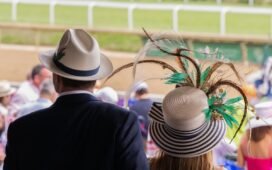
 The northeastern Indigenous bark canoe, generally built of birch or elm, but sometimes fashioned of spruce, chestnut, hickory, or basswood, was an efficient vessel. It was lightweight and could be easily portaged from one waterway to another.
The northeastern Indigenous bark canoe, generally built of birch or elm, but sometimes fashioned of spruce, chestnut, hickory, or basswood, was an efficient vessel. It was lightweight and could be easily portaged from one waterway to another.
A single-bladed paddle was employed to propel the craft. The canoe was a boat in which the paddler, unlike an oarsman, faced in the direction that the vessel traveled. However, the versatile-bark canoe was vulnerable to damage due to its fragility.
Though Native American-dugout canoes are discovered periodically, it is rare for underwater explorers to discover any surviving Indigenous bark canoes sunk in North American waters.
So, in May 1962, when an Albany man claimed he found such an ancient craft the previous summer while exploring Northwest Bay in Lake George, the announcement caught the attention of the director of the Adirondack Museum (today known as Adirondack Experience – The Museum on Blue Mountain Lake).
Eugene Bylo, then age 19, proclaimed that while “skin diving” (snorkeling) in 1961, he located what was hailed as “the first Indian birchbark [sic] canoe ever found in Lake George.” Bylo said he observed “an Indian canoe” sunk in Bolton waters but noted it might also be an old canoe used by a 19th-century fur trader.
Dr. Robert Bruce Inverarity, director of the Adirondack Museum, was intrigued with Bylo’s revelation. At the time, Inverarity was engaged in another Lake George shipwreck project – Operation Bateaux (1963-1964).
That venture was a study of colonial bateau warships from “The Sunken Fleet of 1758.” In the early 1960s, U.S. Navy divers and local frogmen raised a total of three bateaux from the waterway. From 1968–1993, one of those French & Indian War (1755–1763) bateaux was exhibited at the Adirondack Museum.
Eugene Bylo said he did not remove any pieces of the sunken canoe. Inverarity praised the aquatic adventurer for his preservation ethic.

 In 1962, Dr. Inverarity stated he might one day apply to the State of New York’s Education Department for a permit to recover an “authentic” birch-bark canoe from Lake George for the Adirondack Museum. That, however, apparently never happened.
In 1962, Dr. Inverarity stated he might one day apply to the State of New York’s Education Department for a permit to recover an “authentic” birch-bark canoe from Lake George for the Adirondack Museum. That, however, apparently never happened.
On September 3, 1983, while conducting a scuba search several miles north of Million Dollar Beach at Lake George, diver Jack Sullivan and I noticed a sunken Indigenous bark canoe. Barely a foot of the frail watercraft protruded from the lake-bottom sediment.
At the time, Global Positioning System (GPS) was unavailable to record exact location, and we soon swam off to another task. Unfortunately, several dives to relocate the submerged watercraft failed to pinpoint the bark artifact that was hidden amongst Nitella flexilis, a freshwater-green algae that grows to about three feet in height.
Native American bark canoes have not survived well in museums due to their brittleness.
The true testament of Indigenous bark canoes was their adoption by others. The featherweight-craft design has been a popular mode of travel for Adirondack trappers, people fishing, hunters, and leisure recreationists.
A version of this article first appeared on the Lake George Mirror, America’s oldest resort paper, covering Lake George and its surrounding environs. You can subscribe to the Mirror HERE.
New York Almanack has assembled stories about the history and construction of these various watercraft here, this is a subset of our collection of stories about maritime history.
Illustrations, from above: A drawing of a sunken Indigenous canoe lying in a bed of sediment and underwater vegetation by Joseph W. Zarzynski; A drawing of an “Iroquois temporary elm-bark canoe” with six paddles based on an 1849 drawing in the book The Bark Canoes and Skin Boats of North America by Edwin Tappan Adney and Howard I. Chapelle (Smithsonian Institution).








Recent Comments